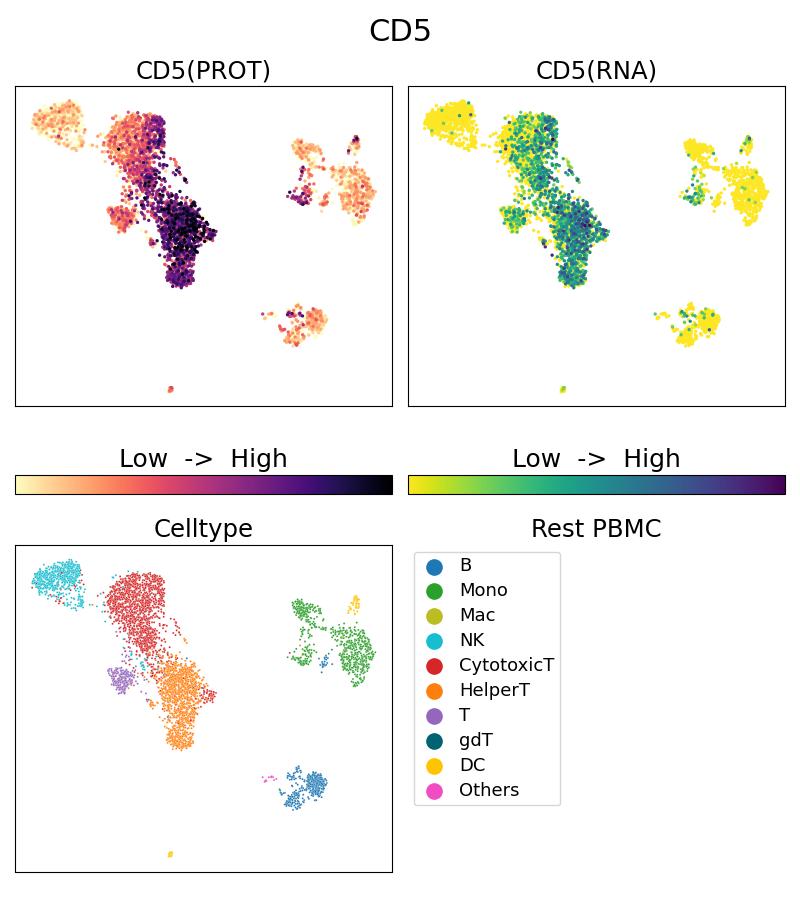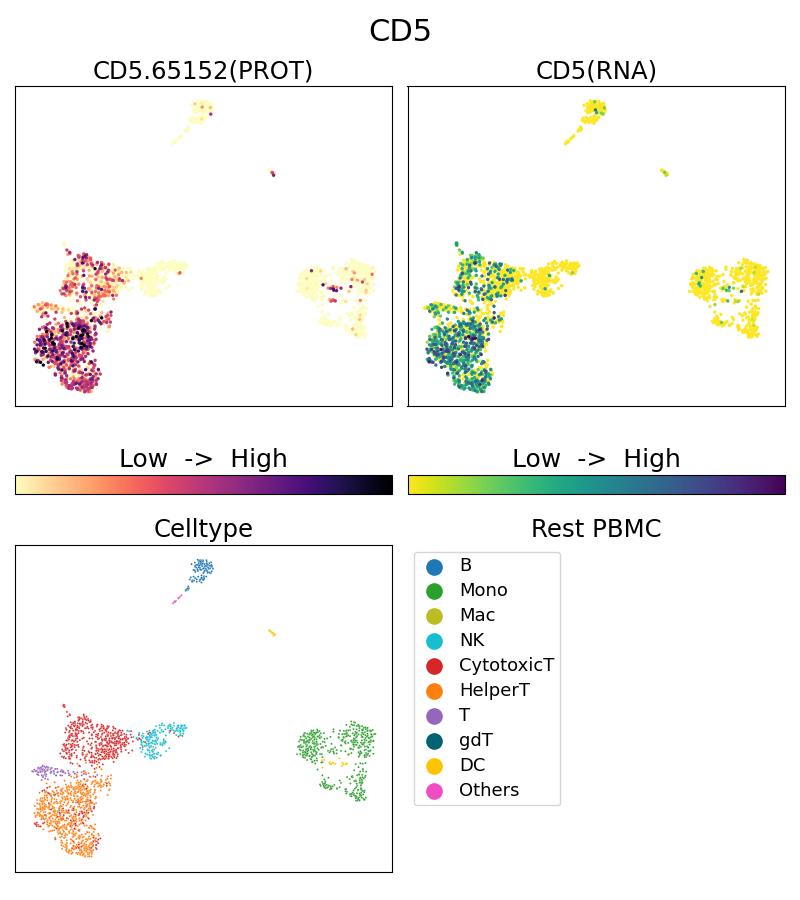验证数据展示
经过测试的应用
| Positive Single Cell (Intra) detected in | 10x Genomics Gene Expression Flex with Feature Barcodes and Multiplexing product. |
| Positive Single Cell detected in | 10x Genomics Gene Expression Flex with Feature Barcodes and Multiplexing product. |
推荐稀释比
| 应用 | 推荐稀释比 |
|---|---|
| SINGLE CELL (INTRA) | <0.5ug/test |
| SINGLE CELL | <0.5ug/test |
| It is recommended that this reagent should be titrated in each testing system to obtain optimal results. | |
产品信息
G65152-1-5C targets CD5 in Single Cell (Intra), Single Cell applications and shows reactivity with Human samples.
| 经测试应用 | Single Cell (Intra), Single Cell Application Description |
| 经测试反应性 | Human |
| 免疫原 | N/A 种属同源性预测 |
| 宿主/亚型 | Mouse / IgG1, kappa |
| 抗体类别 | Oligo Conjugate |
| 产品类型 | Monoclonal |
| 全称 | MultiPro® 5CFLX Anti-Human CD5 (UCHT2) |
| 别名 | CD5, CD5 molecule, LEU1, Lymphocyte antigen T1/Leu 1, T1 |
| 计算分子量 | 495 aa, 55 kDa |
| GenBank蛋白编号 | BC027901 |
| 基因名称 | CD5 |
| Gene ID (NCBI) | 921 |
| ENSEMBL Gene ID | ENSG00000110448 |
| RRID | AB_3673921 |
| 偶联类型 | 5CFLX |
| 完整寡核苷酸序列 | CGGAGATGTGTATAAGAGACAGGTGCCTCGCATTGCACCCATATAAGAAA |
| 条形码序列 | GTGCCTCGCATTGCA |
| 形式 | Liquid |
| 储存缓冲液 | PBS with 1mM EDTA and 0.09% sodium azide , pH 7.3 |
| 储存条件 | 2-8°C Stable for one year after shipment. |
背景介绍
CD5 is a type I transmembrane glycoprotein of the scavenger receptor cysteine-rich family (PMID: 12403363). CD5 is expressed on a majority of thymocytes, mature T cells, B cell subsets, and peripheral blood dendritic cells (PMID: 9858516; 6156984; 10379049; 1384337). CD5 may act as a receptor in regulating T-cell proliferation. It functions as a negative regulator of TCR signaling during thymocyte development (PMID: 7542801).
Protocols
| Our current MultiPro staining protocol for the cocktail | Download protocol |
| 10x Genomics CG000149_Demonstrated Protocol CellSurface Protein Labeling_Rev D.pdf | Download protocol |



